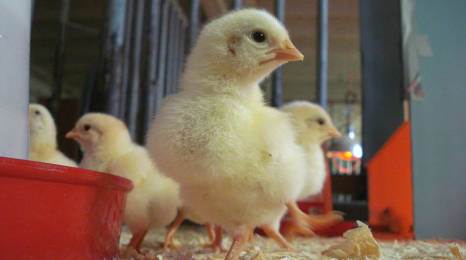
15 May Bioavailable Phosphorus Releasing Efficacy of Escherichia coli
Bioavailable Phosphorus Releasing Efficacy of Escherichia coli and
Aspergillus Derived Phytases in Broiler Chick Diet
Carmencita D. Mateo, DVM, MS, PhD* and Mylen S. Billena, BSChem, MSc, PhD
Animal and Dairy Sciences Cluster, College of Agriculture,
University of the Philippines Los Baños, Laguna 4031, Philippines
ABSTRACT
A broiler chick trial investigated the phosphorus (P) releasing efficacy of phytases derived from Eschericia coli (ECP) and Aspergillus niger,
a fungus (FP) when added to a corn-soybean meal diet with no supplemental inorganic P (iP).
Four graded levels of iP were added to the basal diet to construct a standard curve from which available Prelease could be calculated for the phytase treatment.
In all cases, phytase supplementation levels were based on an assessment of phytase premix activity.
One phytase unit (FTU) is defined as the amount of enzyme required to release 1 μmol of iP per min from 5.1 mM sodium phytate at 37°C and pH 5.5. Weight gain,
weight and percentage of tibia bone ash increased (P<0.05) with an increase in iP supplementation of the basal diet.
ECP derived phytase released two to three times more P (P<0.05) when added at 130 -260 FTU/kg compared to FP added at 250-500 FTU/kg. At 130 FTU/ kg, ECP released more P (P<0.05) than FP added at 1000 FTU/kg. Tibia weight and percentage of tibia ash responded (P<0.05) to graded levels of ECP up to 260 FTU/kg, however,
130 FTU/kg was as effective as 260 FTU/kg.
Weight gain and gain:feed ratio were higher (P<0.05) for chicks fed FP added at 250 and 1000 FTU/kg than for those fed ECP at 65 and 260 FTU/kg.
However, chicks fed ECP at 130 FTU/kg had similar gain and gain:feed ratio as those fed FP at 1000 FTU/kg.
Tibia ash (percentage and milligrams) was higher (P<0.05) for chicks fed ECP added at 130 and 260 FTU/kg than those fed FP at 250, 500, and 1000 FTU/kg, respectively.
This trial revealed a significant advantage of the E. coli derived phytase over the Aspergillus fungal derived phytase in releasing phytate bound P in broiler chick diet.
INTRODUCTION
Phosphorus (P) is the third most expensive nutrient component of non-ruminant diets, afterprotein and energy.It is essential for assuring strong skeletal growth and egg shell formation of chickens.It is generally known that cereals and oil-seed type diets often do not contain sufficient available P (AP) to meet the P requirements of poultry to maximize production performance and bone mineralization.The low availability of P in plant feed ingredients poses an environmental problem as well because large amounts of consumed P is excreted in the feces
and urine. The use of phytase improves the bioavailability of P in cereals and oilseeds.
FOR CORRESPONDENCE
Phytase is a feed enzyme that breaks down the phytate molecule so that P can be absorbed and utilized by the animal.
It effectively reduces the need for inorganic supplements,
and more importantly, minimizes the P excretion into the environment.
Microbial phytase has been proven to be effective in increasing the bioavailability of P from plantfeed materials in chickens (Boling-Frankenbach et al., 2001; Augspurger et al.,2003).
The first commercially available phytases were derived from different species of fungi. A commercial fungal phytase (FP) that is commonly used in the local feed industry is a recombinant enzyme from Aspergillus niger that is classified as a 3-phytase, with hydrolysis of the phosphate moiety being



решебник по литературе 6 класс соловьева рабочая тетрадь 1 часть
Posted at 05:17h, 24 JanuaryHello, I would like to subscribe for this blog to get latest updates, therefore where can i do it please help.| а